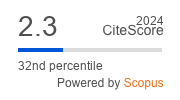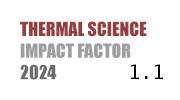THERMAL SCIENCE
International Scientific Journal
Authors of this Paper
External Links
STRENGTH AND MICRO-STRUCTURAL CHARACTERISTICS OF CARBIDE SLAG INSPIRED SLAG-FLY ASH CURED DREDGED SLUDGE
ABSTRACT
The curing agent used to enhance and harden dredged sludge from urban rivers was formulated from industrial waste materials, including carbide slag, blast furnace slag, fly ash, and cement. Laboratory tests were conducted to examine the compressive strengths of the sludge samples after 7, 14, and 28 days of curing. Additionally, X-ray diffraction and thermogravimetric analysis were employed to examine the formation and microstructure distribution characteristics of the solidified sludge products. These methods also provided insights into the synergistic curing mechanism of the cement-carbide slag-slag-fly ash composite system. The findings demonstrated that the following ratio of curing agent to cement: carbide slag: slag: fly ash = 10 : 5 : 7 : 3 is the ideal one.
KEYWORDS
PAPER SUBMITTED: 2024-10-01
PAPER REVISED: 2024-11-01
PAPER ACCEPTED: 2024-12-01
PUBLISHED ONLINE: 2025-06-01
DOI REFERENCE: https://doi.org/10.2298/TSCI2502483G
CITATION EXPORT: view in browser or download as text file
2025 Society of Thermal Engineers of Serbia. Published by the Vinča Institute of Nuclear Sciences, National Institute of the Republic of Serbia, Belgrade, Serbia. This article is an open access article distributed under the terms and conditions of the Creative Commons Attribution-NonCommercial-NoDerivs 4.0 International licence

